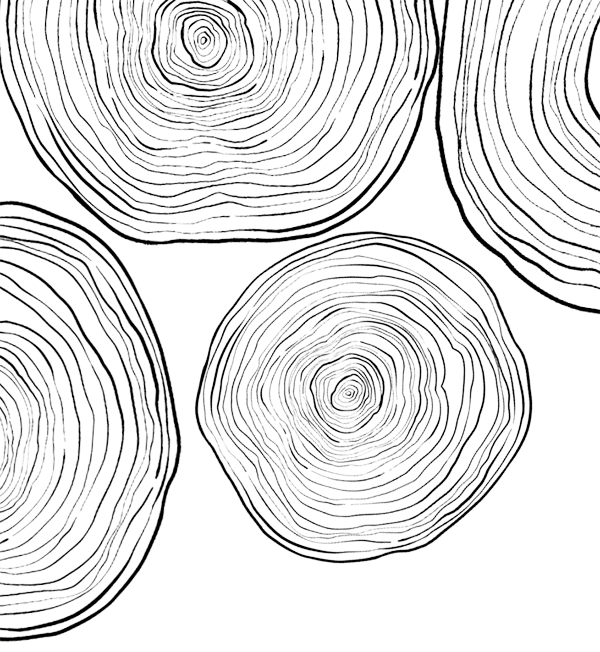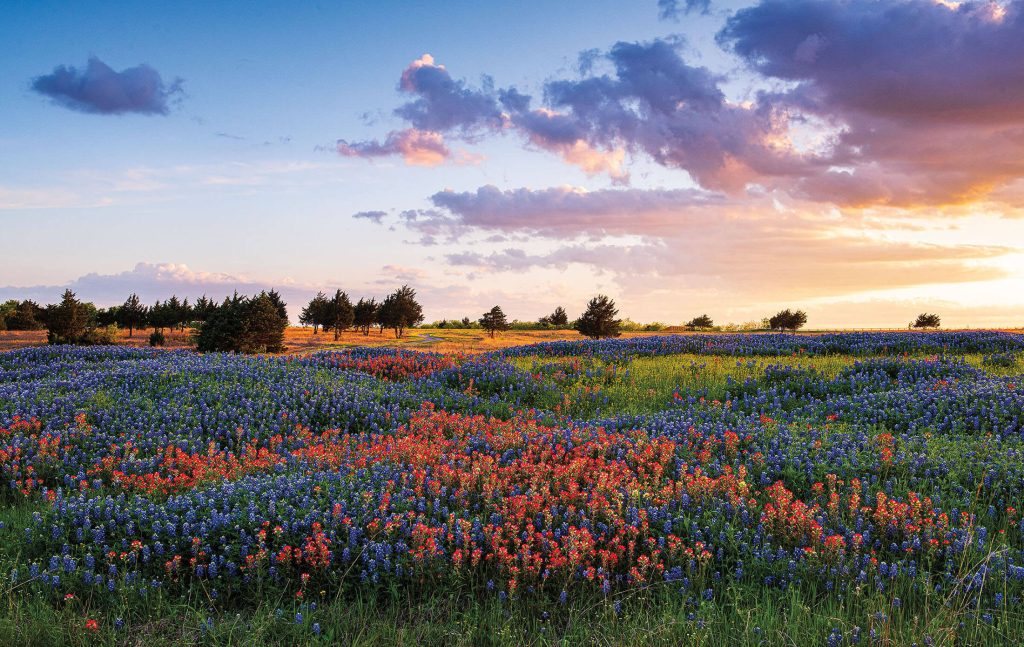Blossoms in the Sky
Flowering trees take Texas’ seasonal blooms to new heights
By Asher Elbein
Photo by Theresa DiMenno
As winter ebbs across Texas,
plants—and plant lovers—spring to life. Our state is famous for the profusion of wildflowers covering landscapes and roadsides from the South Texas coastal prairies to the Panhandle grasslands. But these delicate denizens of the dirt aren’t the only plants capable of putting on a show. Throughout Texas, many types of trees flower as well, providing nectar and pollen for insects, fruit for animals, and striking blooms that add another level of color to the season.
Some blooming trees, like dogwoods, sit quietly in the shade of sprawling forests in East Texas. Others, like Texas mountain laurels, make their own canopies in the central and western parts of the state, robust greenery sprouting from the limestone of the Edwards Plateau. Many of these trees might be familiar for their presence in the urban landscape, like the Texas redbud blooms that liven up city parkways and landscaping. All are just as worthy of appreciation as their smaller flowering friends.
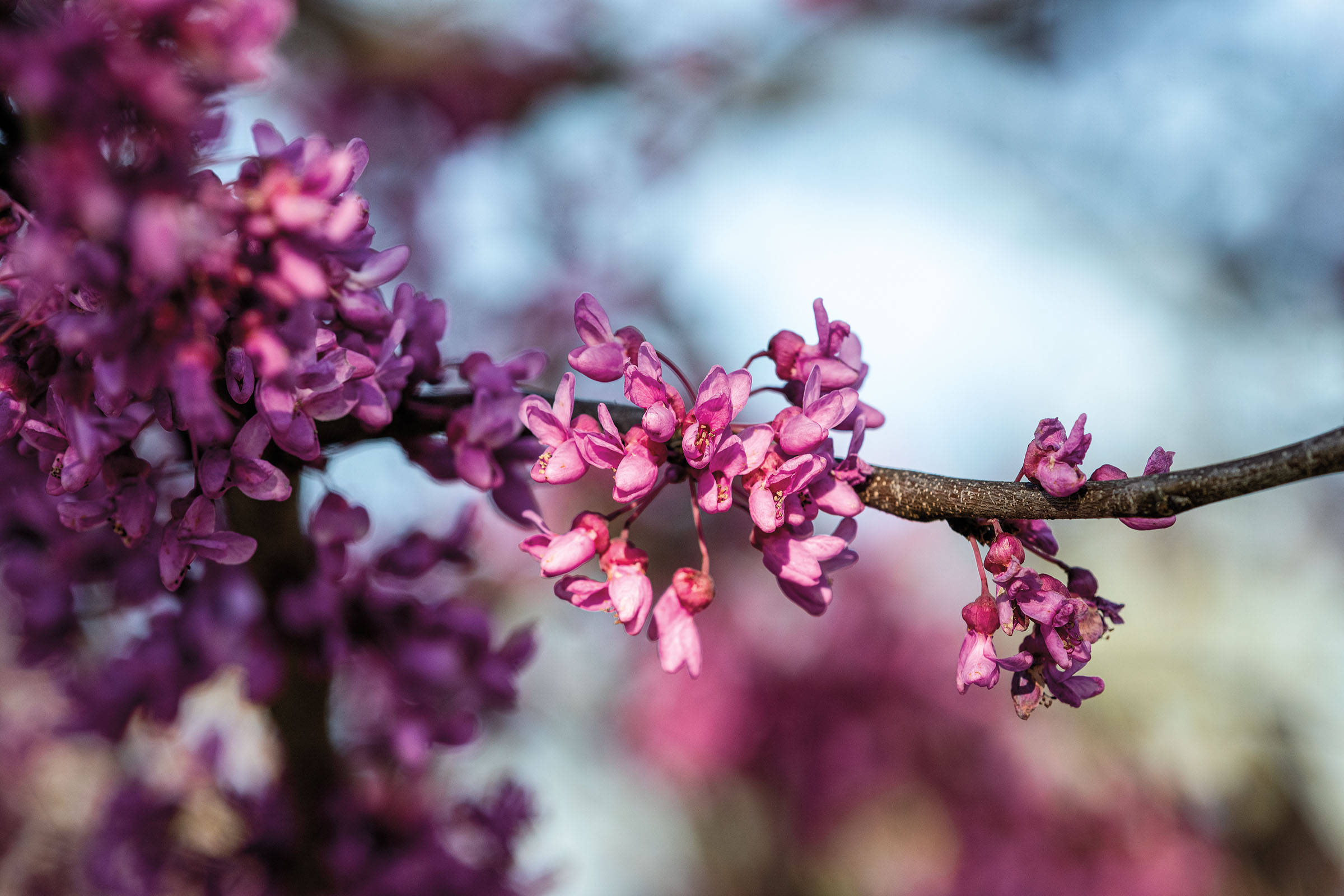
Texas Redbud
Height: 10-20 feet
Range: from Del Rio through Central Texas and up into the Dallas-Fort Worth area
Blooms: March to April
See: Red Bud Isle park in Austin; Fredericksburg Nature Center; Jacob’s Well Natural Area in Wimberley
Among the first trees to flower every year in North and Central Texas, the Texas redbud is also one of the most dramatic. These small trees, which are a variety of the more widespread eastern redbud, unfurl little pink or magenta flowers from their bare bark, attracting honeybees, mason bees, and other pollinators. That bounty of insects in turn attracts songbirds, which hunt amid the redbud’s flowering boughs and, when the tree starts forming seed pods, happily devour the seeds.
Redbud flowers have the same irregular shape as pea blossoms, and the tree is, in fact, also a member of the legume family. Like many other legumes, its flowers and seed pods are edible. They taste somewhat like green beans with a slightly sour aftertaste.
“To me, it tastes like a real mild cabbage,” says Courtney Blevins, a Fort Worth-based urban forester with Texas A&M Forest Service. Redbud flowers can be fried, pickled, or eaten raw on salads.
Like many trees, redbuds also produce medicinal compounds. Their bark makes a fluid extract that works as an active astringent—a compound that constricts body tissues—historically used in the treatment of dysentery.
Texas redbuds are more drought tolerant than their eastern cousins. Their waxy 6-inch leaves help them retain moisture. In fall, those leaves turn a bright, showy gold or red. The tree’s tolerance for relatively thin soils gives it a wide native distribution across Texas, and its beauty has
led gardeners to develop multiple cultivars of different colors and sizes, which pop up in far-flung gardens.
The next time you see a redbud in bloom, go ahead and pluck yourself a flower—it carries the taste of an early Texas spring.
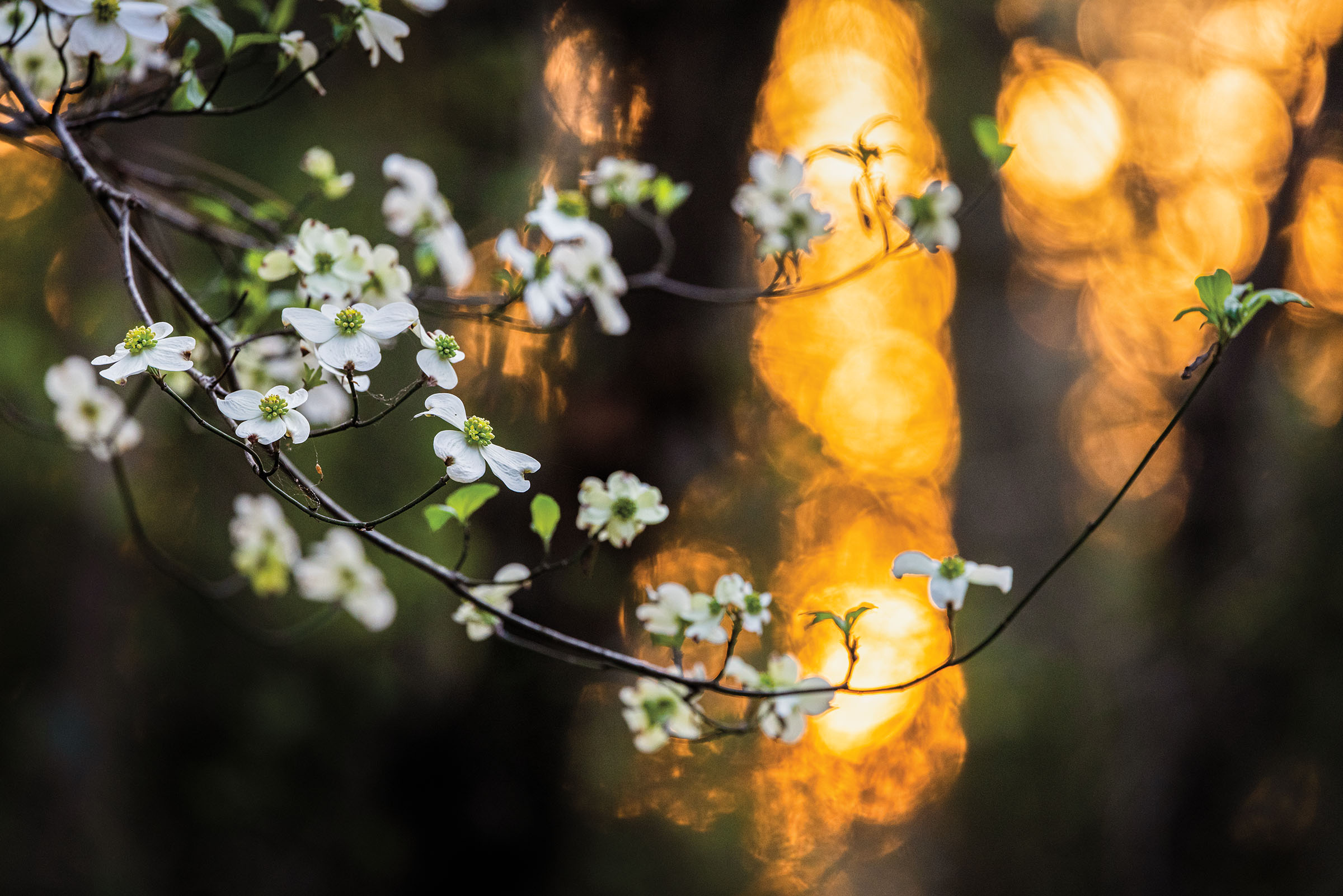
Flowering Dogwood
Height: 20-40 feet
Range: East Texas to just west of Interstate 45
Blooms: March to May
See: Texas Dogwood Trails Celebration in Palestine, March 17-April 2; Tyler County Dogwood Festival in Woodville, March 18-April 2
While many trees in Texas flower, few do so beautifully enough to warrant their own festivals. The flowering dogwood’s snowy blooms have long been a source of celebration across the southeastern United States, and the East Texas communities of Woodville and Palestine hold festivals to celebrate their arrival each spring.
Dogwoods are graceful, medium-size trees generally found beneath taller canopies of pine and hardwoods, where they grow in moist, rich soils. They aren’t just colorful in spring. Their leaves turn a rusty red in autumn, and their fruit—egg-shaped and colored an eye-popping scarlet—are a favorite snack of squirrels and birds, Blevins says.
The brown and red wood of dogwood is unusually tough, which has led to its use over time in tools that take repeated blows, such as mallets, golf clubs, wedges, and the handles of chisels. Its most common usage is in shuttles—a tool that helps hold and guide thread—in textile plants as the wood can withstand the strain of
mechanical looms.
Dogwood also has traditional medical uses, Blevins says. Its inner bark contains the alkaloid cornin, which Native Americans used as a malaria treatment. Pioneers steeped it in whiskey or brewed it into tea for similar reasons. The red pigments found in dogwood berries and fall leaves also show up in the bark and roots, which native people used to make scarlet dyes.
Outside of Texas, dogwood trees have been under threat from a fungal ailment called Discula destructiva. The fungus prefers long periods of cool, damp weather, particularly at elevations above 3,000 feet, and it can sweep through landscapes killing trees, says David Appel, a plant pathologist with Texas A&M University. But luckily, the dogwoods of East Texas are safe. Appel says our lowland climates are too warm and dry to risk fungal infection. In our state, at least, dogwoods will flower—and people will gather to celebrate them—for a long time to come.
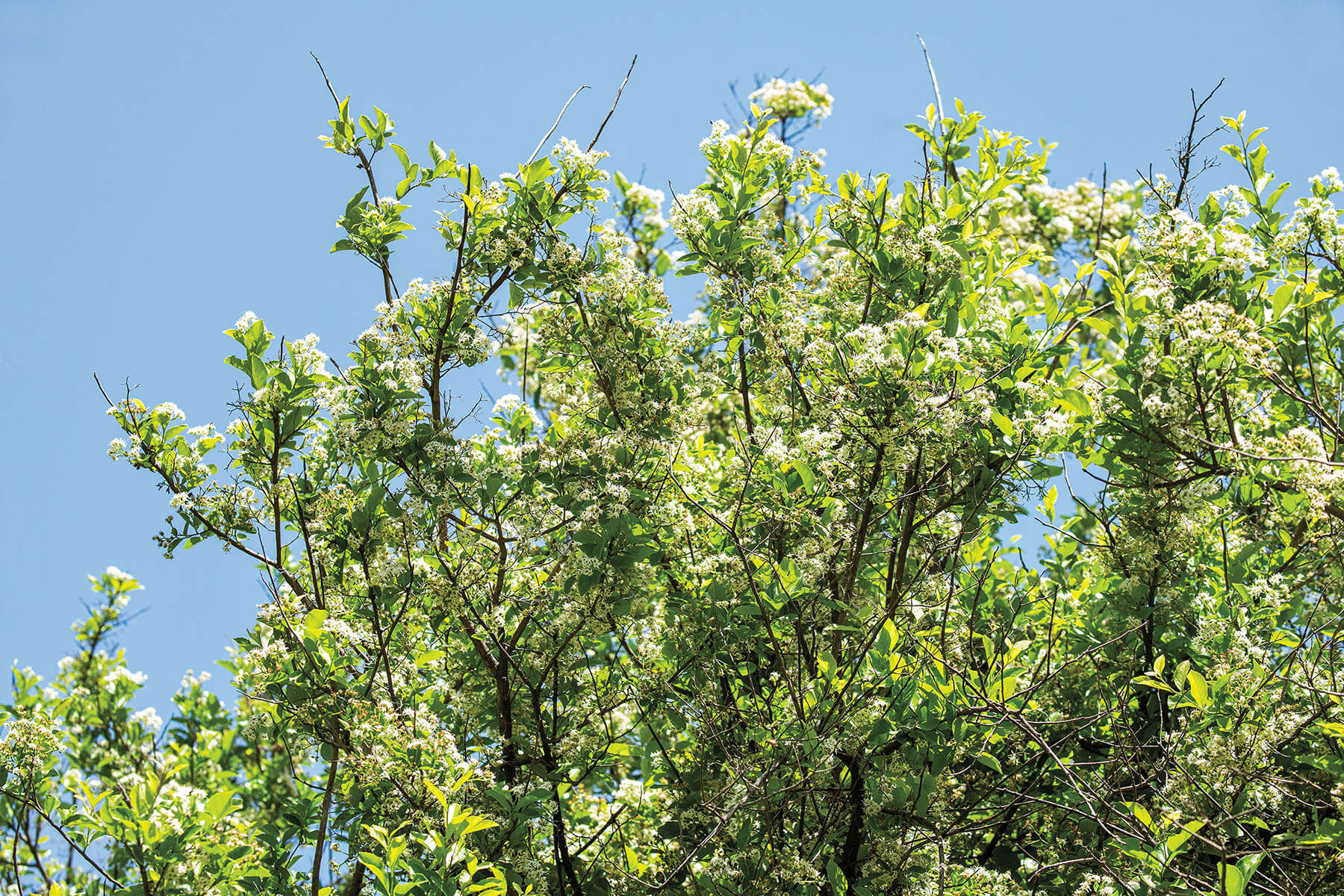
Anacua Tree
Height: up to 50 feet
Range: from Central Texas to the Gulf Coast and up the Rio Grande Valley; used in landscaping in cities like San Antonio and Houston.
Blooms: spring through summer
See: Laguna Atascosa National Wildlife Refuge in Los Fresnos; National Butterfly Center in Mission
The baking sun of a South Texas summer can be brutal—unless you’re sitting under the dense, cool shade of the anacua tree. Anacua are generally medium-size trees that prefer moist environments like the valleys and creek bottoms of South Texas. Their name comes from Nahuatl, one of the indigenous languages of Mexico, combining āmatl (paper) and cuahuitl, (tree). English speakers traditionally have modified the name to “knockaway,” or they call it the sandpaper tree for its rough leaves. (Those leaves might seem evergreen, since they persist in winter, but the tree actually replaces some of them in early spring.)
Whatever you call it, the tree puts on quite a show. Anacua are members of the borage family, a group known for its flowering herbs and blue star-shaped flowers. Anacua trees regularly erupt in bursts of small fragrant white blossoms, as if they had been dusted in snow. “They bloom quite a bit throughout the year,” says Benito Treviño, an ethnobotanist and proprietor of the Rancho Lomitas Native Plant Nursery in Rio Grande City. “Their flowers and fruit are ripe nearly all the time.”
That makes them a reliable food source for wildlife. The tree’s leaves are the only known diet of the anacua tortoise beetle, a tiny insect found in South Texas. The flowers are also a big draw for butterflies. Treviño says anacua berries—which are tiny, bright orange, and grow from April to June—are eaten by raccoons, opossums, and birds like clay-colored thrush, desert cardinals, mockingbirds, and grackles.
They’re edible for humans, too. “When I was a child, it was one of the plants that you would harvest to eat,” Treviño says. “It’s a little bit sweet, but it does have a little bit of turpentine taste to it.” If that doesn’t put you off, the fruit can be made into jams to spread on bread of your choice, and enjoyed in the shade of these handsome subtropical trees.
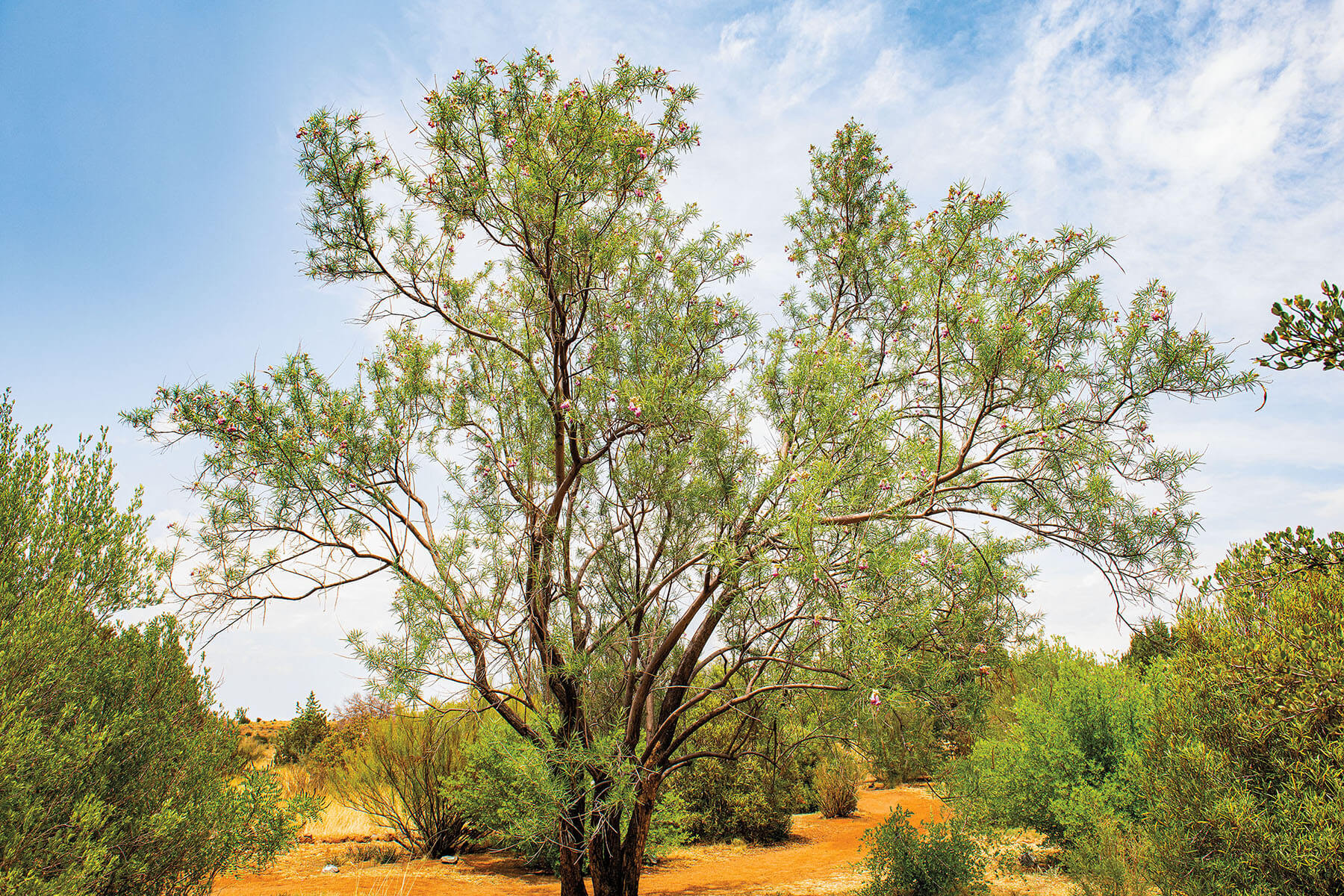
Desert Willow
Height: 15-40 feet
Range: The Trans-Pecos region of West Texas
Blooms: heaviest in May to June, but also into September,
usually after rain
See: Big Bend National Park; Franklin Mountains State Park in El Paso
The desert landscapes of West Texas may seem an unlikely place to find a flowering tree. But in the river bottoms, draws, and arroyos of places like Big Bend National Park, the slender-twigged and shrubby desert willow awaits the summer rains.
The desert willow gets its name from its leaning, twisting trunk and narrow leaves. However, Blevins says it is technically not a willow but a member of the catalpa family, which is part of a broader group better known as trumpet-creepers, like the more familiar yellow trumpet. Similar to members of its family, the desert willow grows rapidly. And like many desert plants, it holds its colors in reserve. Only after storms sweep the Chihuahuan Desert does the desert willow unfurl its tubular flowers. The flowers come in many different shades of white and lavender, including rose, purple, and two-tone mixes, which makes this tree a popular option for gardeners.
The flowers aren’t just pretty. They’re also sold in Mexican markets as a home remedy for coughs and respiratory ailments. Other parts of the plant have antifungal properties, which can be used to treat athlete’s foot and yeast infections. The flowers’ nectar appeals to pollinators, including butterflies and hummingbirds, and bees that feed on desert willow are known to make tasty honey. In the spare desert, the tree’s relatively thick vegetation makes the desert willow an important habitat for birds.
After the flowers fall, desert willows produce seeds in distinctive, 6- to 10-inch-long pods. The pods fall onto the banks of the dry washes, where they await the next rain and their chance to grow alongside their parent trees, someday delivering flowers of their own.
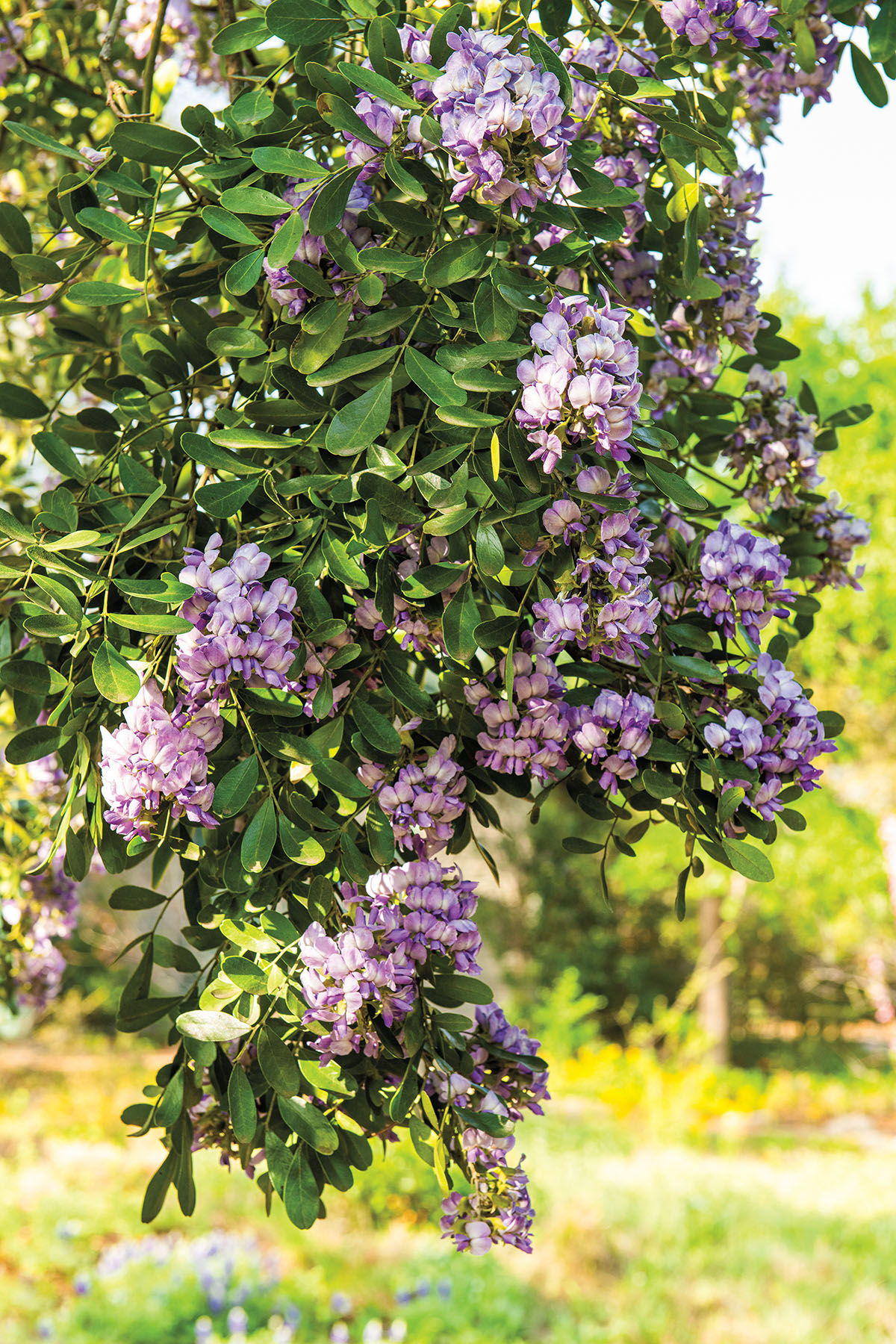
Texas Mountain Laurel
Height: usually 10-15 feet, but can range from 3 to 30 feet
Range: Central and South Texas and into northern Mexico; used in landscaping throughout the state.
Blooms: February to April
See: Kickapoo Cavern State Park near Brackettville; Government Canyon State Natural Area in San Antonio
In early spring, The Texas mountain laurel transforms from a slow-growing, multi-trunked shrub into a display of purple hanging bouquets. A drought-tolerant plant with a fondness for hardscrabble limestone soils, the tree’s dark green canopy is a blanket of small, glossy leaves. The 3- to 7-inch flower bunches are composed of pea-like blossoms that look a bit like hanging grapes. They smell a bit like them, too—or at least like grape-flavored Kool-Aid.
The tree also produces a bumper crop of brilliant lacquer-red seeds, which give it another common name: mescal bean. The Comanche people—whose traditional nomadic travels ventured across the prairies and limestone hills of Central Texas—have long used these seeds for necklaces, bracelets, and rattles, says Carney Saupitty Jr., cultural specialist at the Comanche National Museum and Cultural Center in Lawton, Oklahoma. The seed bracelets can be linked into a sash “that goes around your body, to make however you’re dressing look more decorative,” Saupitty says.
Though beautiful, the red seeds are poisonous. They contain the alkaloid cytisine, a substance resembling nicotine, and eating them can cause vomiting, diarrhea, or even comas. Some Native American tribes used the beans’ purgative effects as part of vision quests.
Though it has a similar name, the “mescal bean” should not be confused with the alcoholic drink mezcal, which is brewed from the agave plant. The two are completely unrelated. Fortunately, interacting with mountain laurels is safe. The seeds are incredibly tough, and touching them isn’t dangerous. Feel free to enjoy this hardy scrubland tree and its Kool-Aid-scented flowers in peace.
Blooms on the Branch
Dozens of Texas native trees blossom in the spring and summer
Photos by Theresa DiMenno
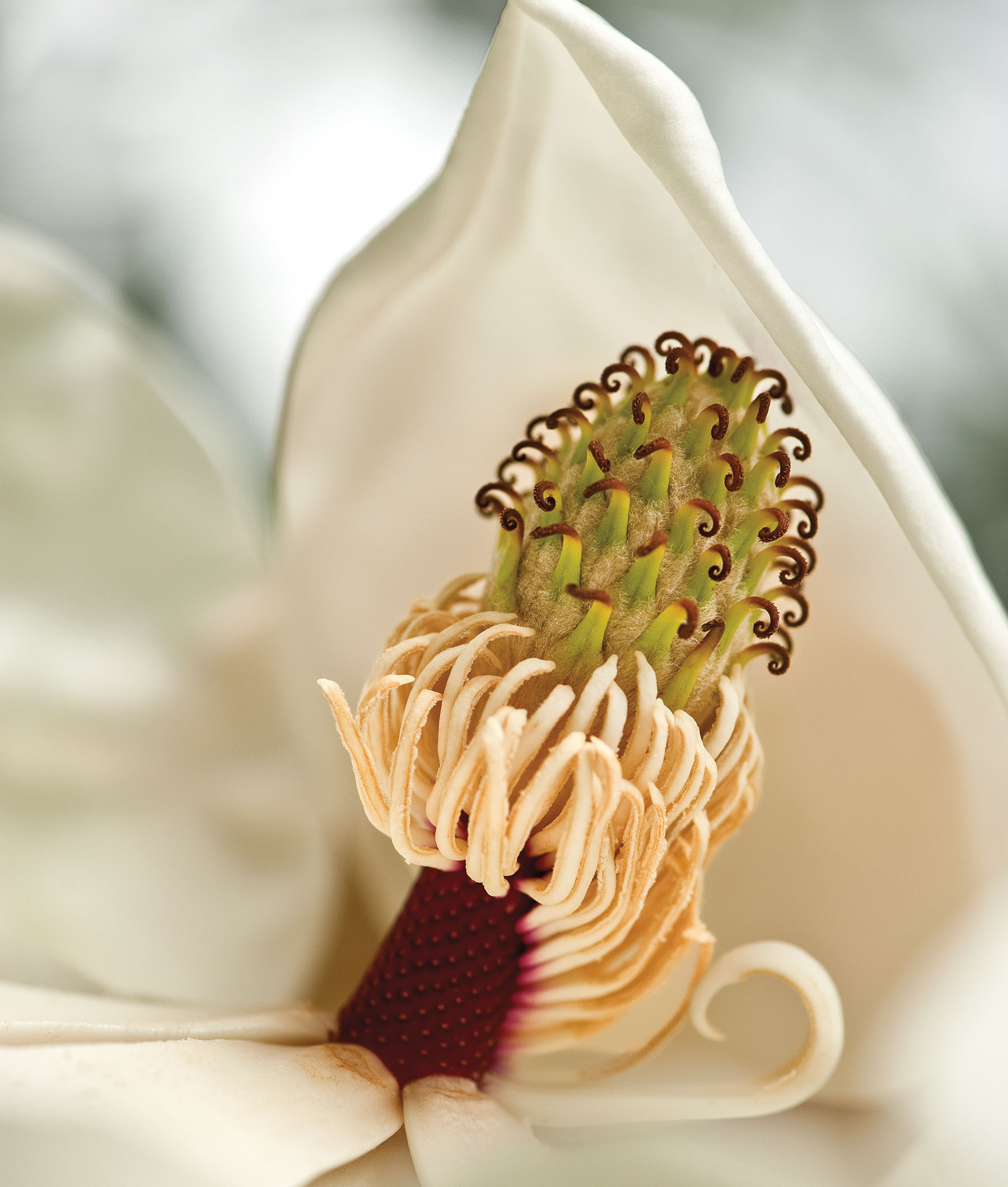
Southern Magnolia
Native to East Texas and a popular ornamental around the state, the tree blooms April to June with white cup-shaped flowers.
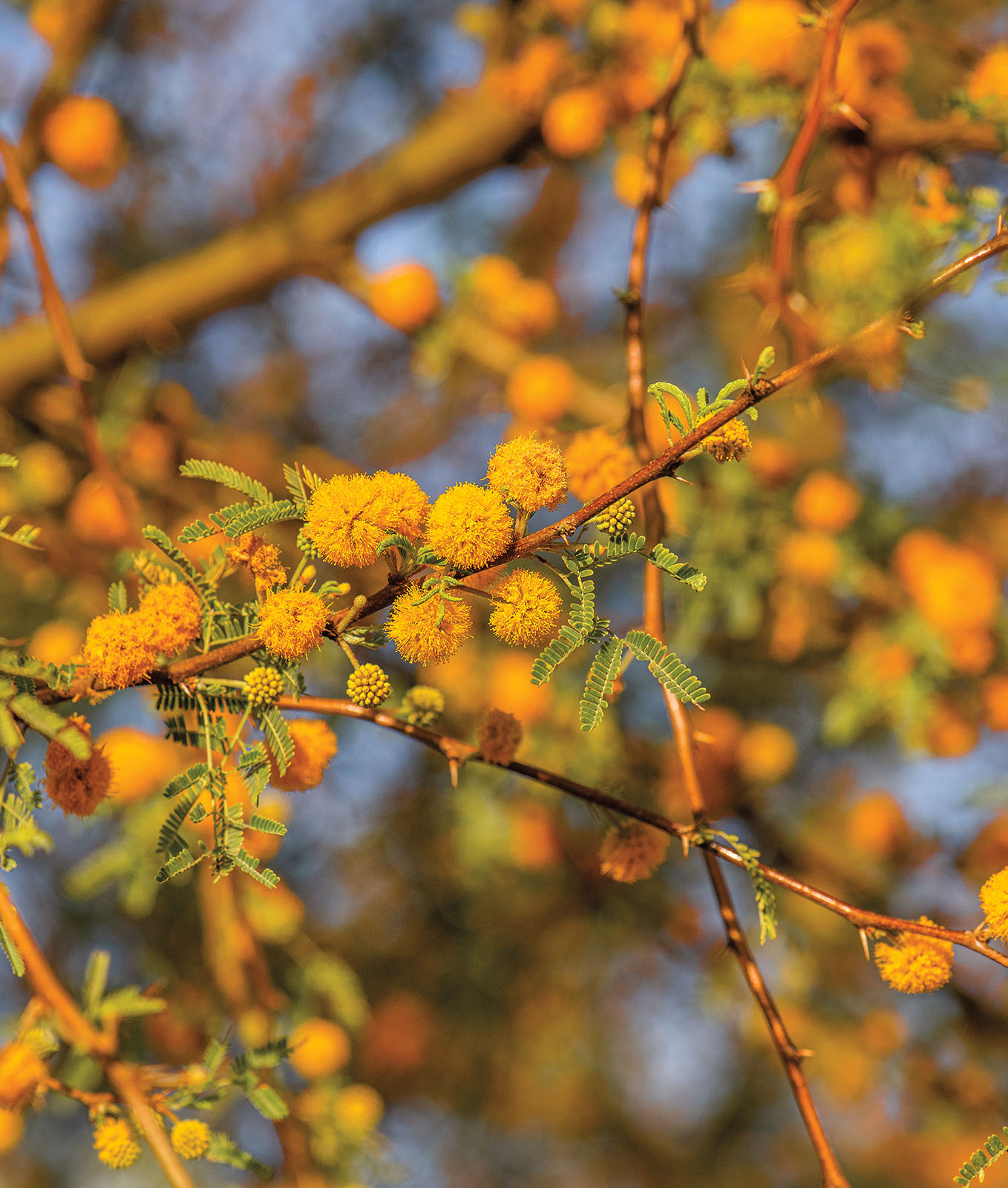
Huisache
This thorny tree blooms with flowers that resemble furry orange balls. It’s found primarily in the southern and central regions of the state.
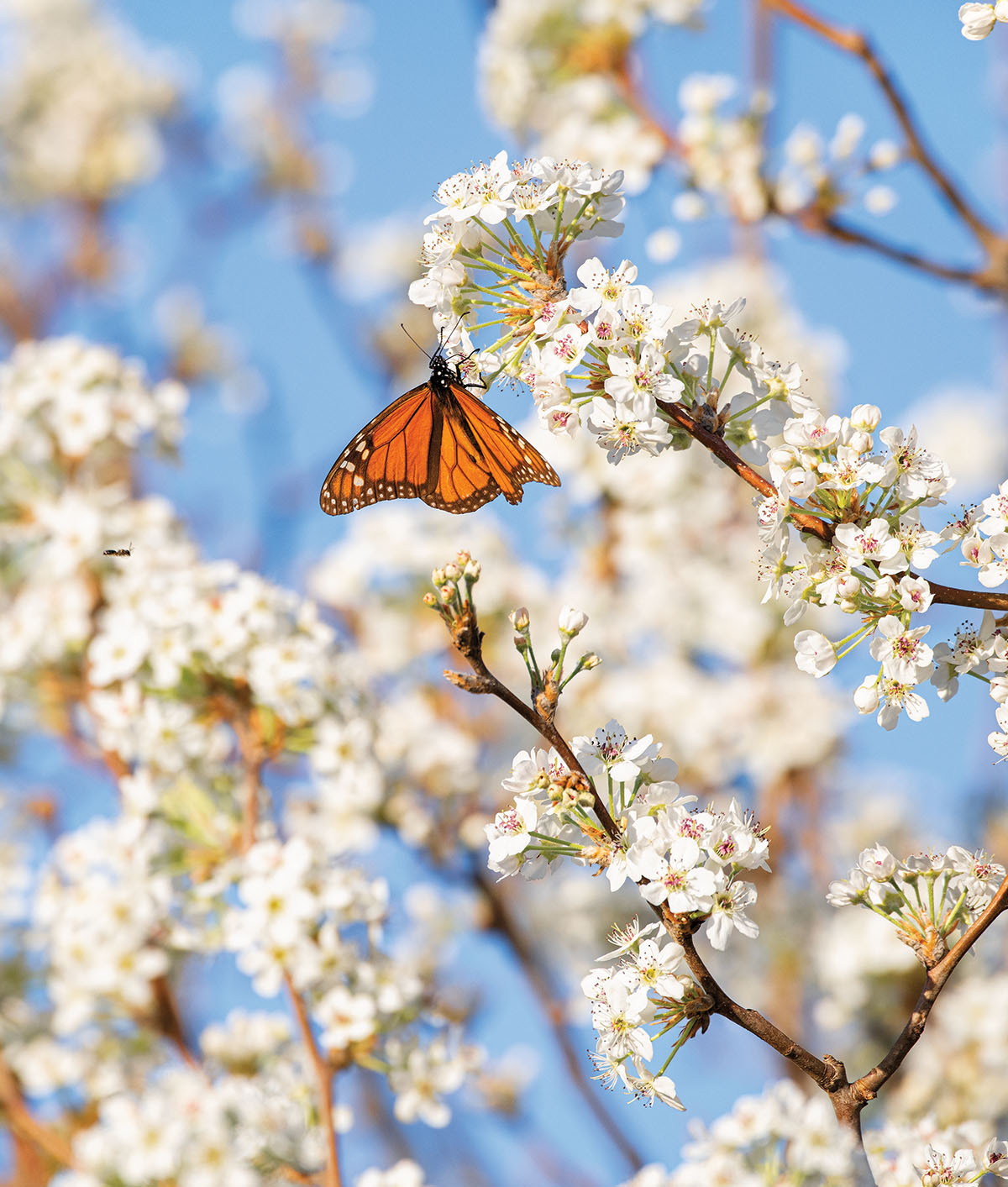
Mexican Plum
Delicate white and pink flowers dust this fruit tree, found in northeast and north-central Texas. The plums are popular with humans and wildlife.
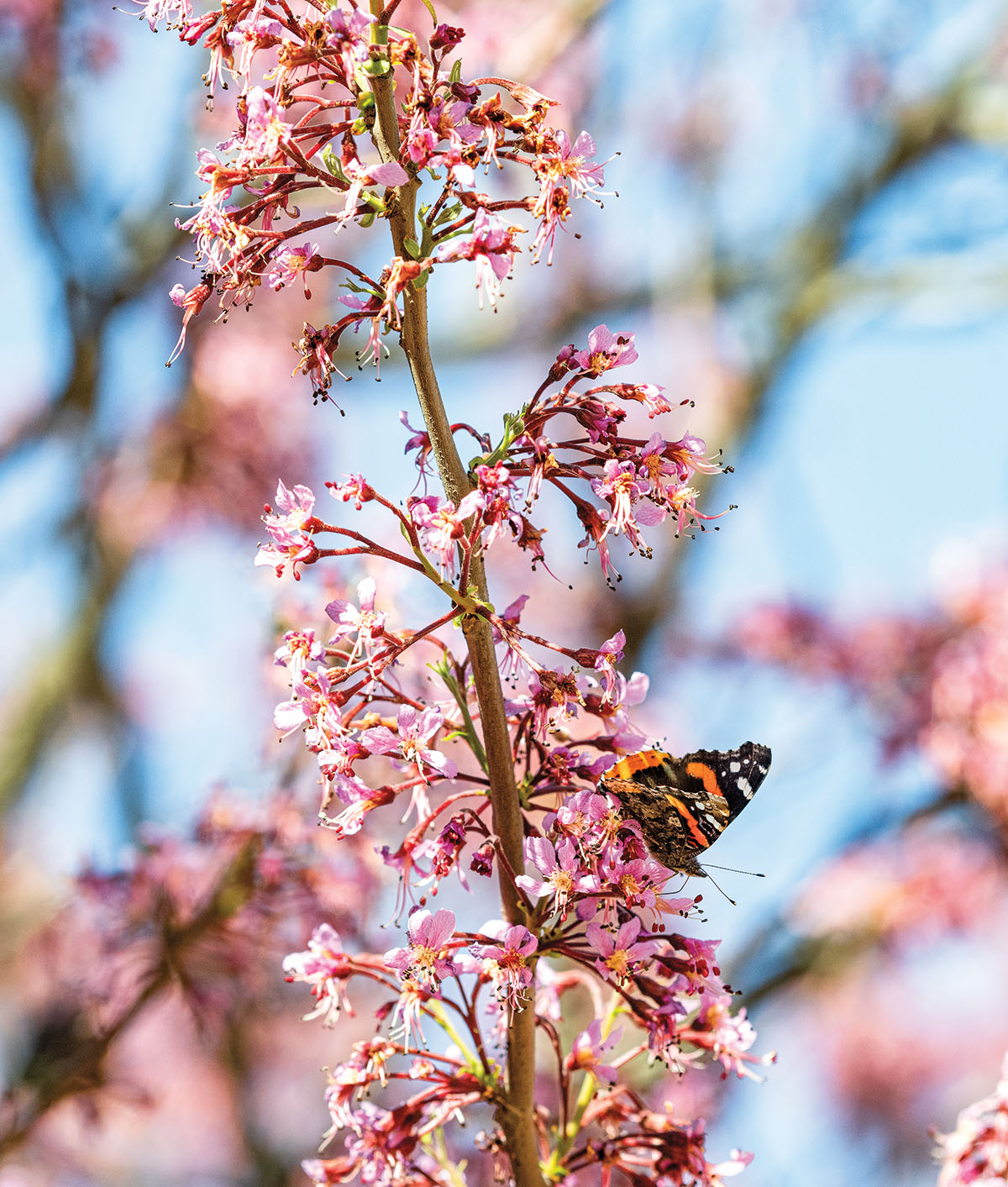
Mexican Buckeye
This petite tree likes the rocky inclines and ridges of central and western Texas and creates a showy pink bloom from spring to early summer.
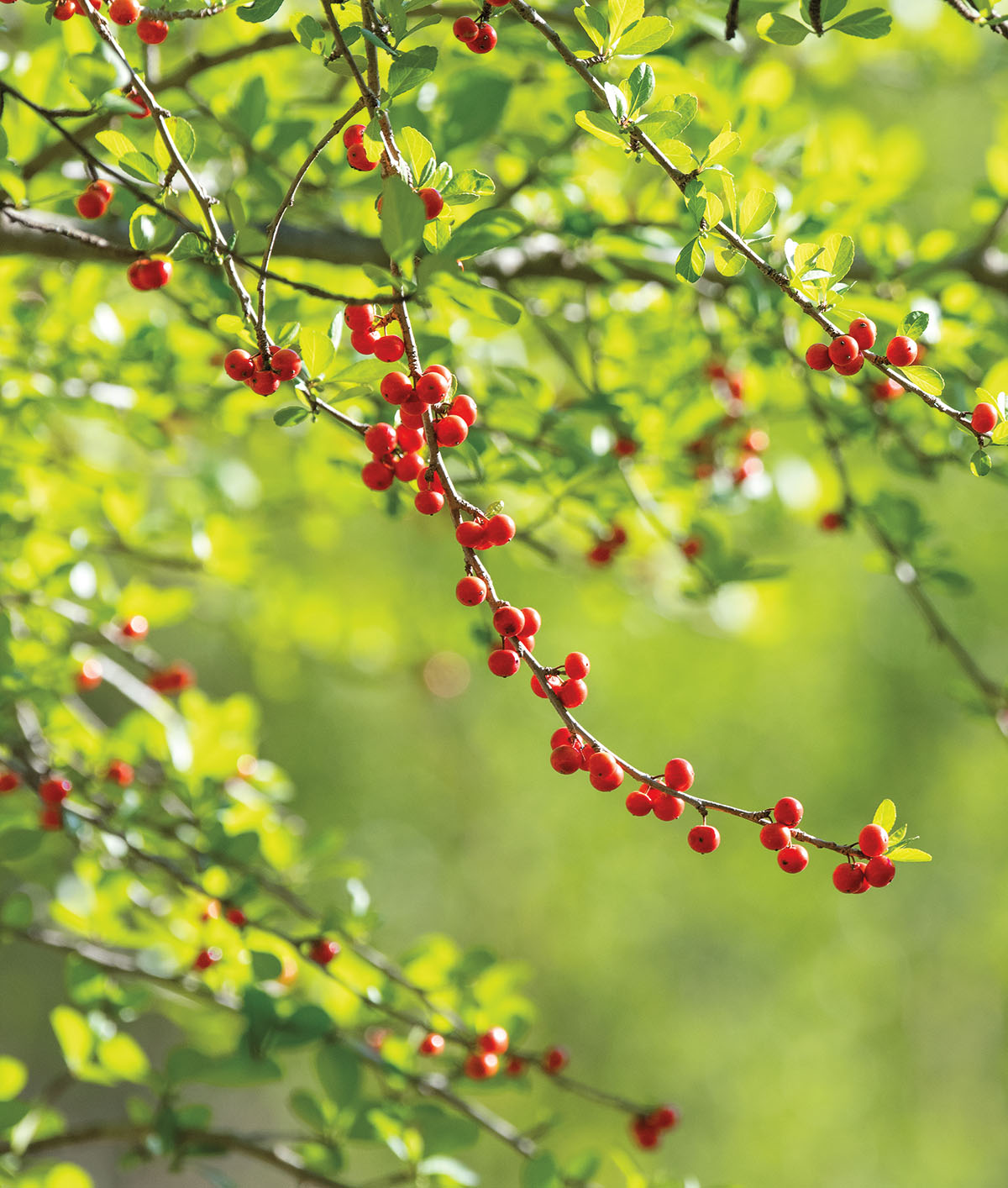
Yaupon Holly
Popular in gardens, yaupon holly can be cultivated into a hedge. Along with white flowers that bloom in April and May, the tree bears bright red berries.
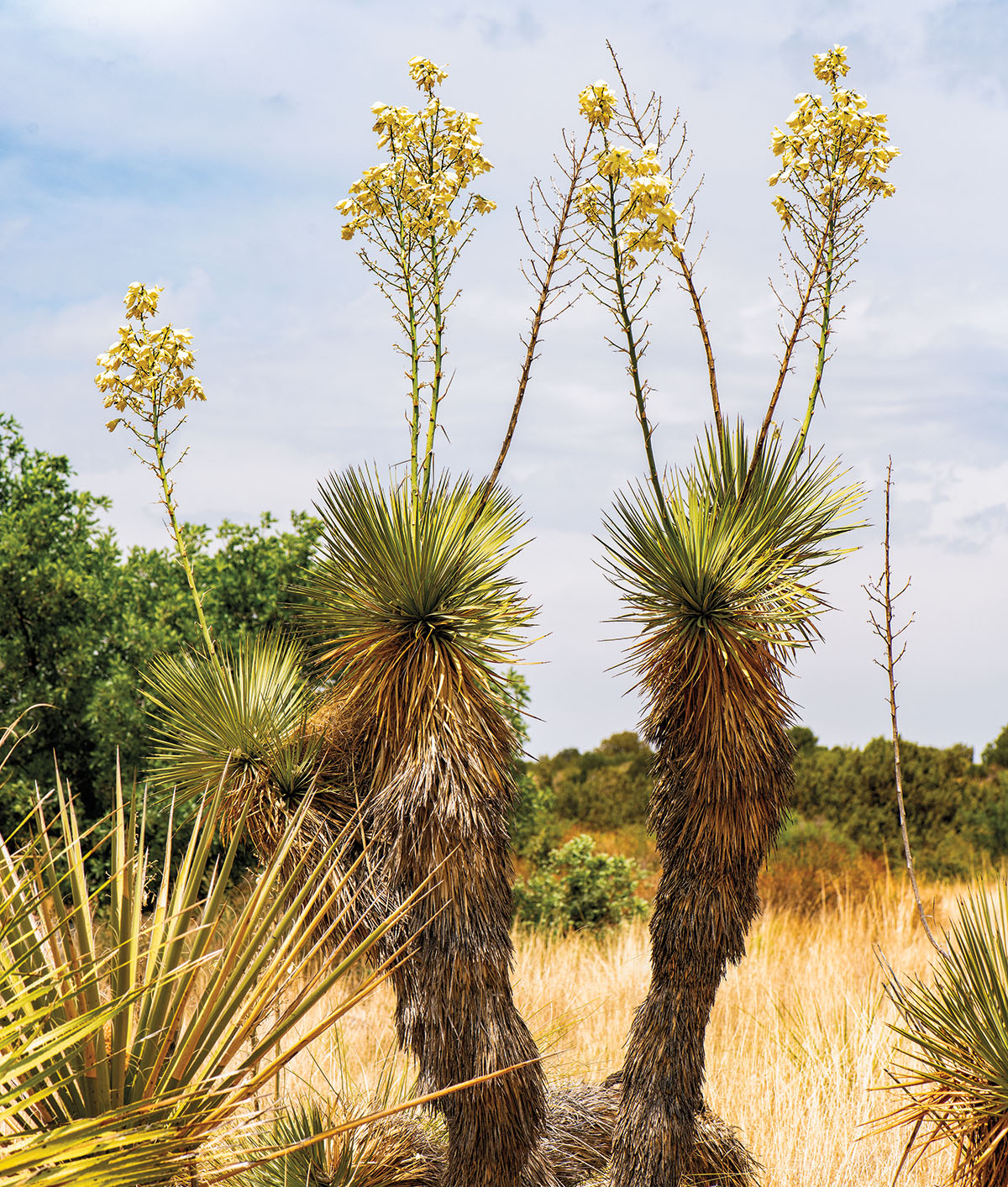
Thompson’s Yucca
Found in the dry climates of West Texas and northern Mexico, Thompson’s yucca grows up to 10 feet tall and blooms with white flower stalks in April and May.
